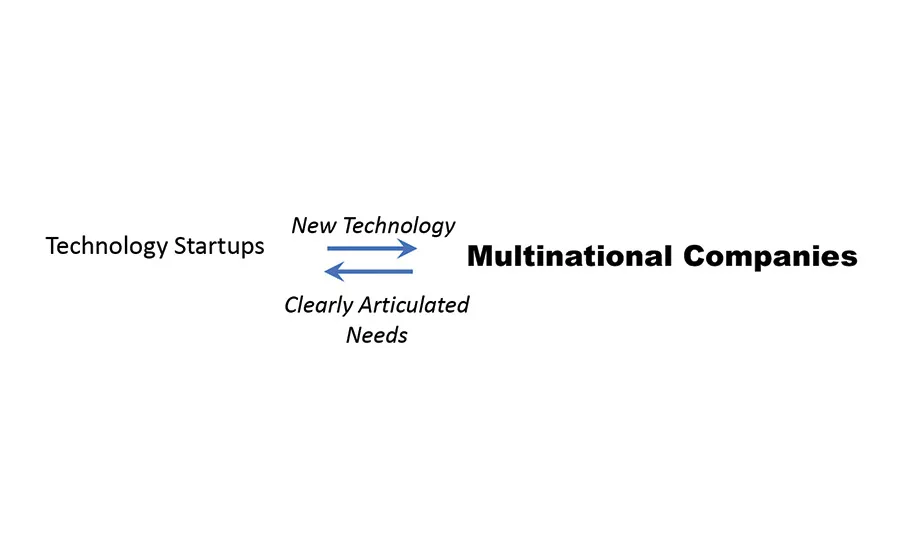Strategic Solutions
Driving Innovation by Collaborating with Others: Know Your Areas of Focus
Scouting for collaboration opportunities outside your company is a process that begins with defining and prioritizing the market's needs in a way that anyone unfamiliar with your business can understand.


Figure 1. Multinational companies must learn to translate market needs into a common language to benefit from external collaboration partners such as technology startups.
Meeting the technical and product needs of customers can be very challenging, especially if R&D resources are constrained or you do not have the right in-house expertise to deliver a timely response. A faster technology solution to meeting customer requirements might be found outside of your company, in a university or federal laboratory, startup company, or research institution. Developing a collaborative relationship with the right technology partner that can scout feasible technology to address attractive market opportunities is a concept worth exploring.
Scouting for opportunities outside your company is a process that begins with defining and prioritizing the market’s needs in a way that any research institute, university, or startup laboratory—unfamiliar with your business—can understand and offer potential solutions. These needs can be grouped into what I refer to as focus areas.
Focus Areas
The list for all your unmet customer needs can be extensive, but it helps when they are grouped into focus areas. A focus area is a key technical opportunity for commercialization that addresses the strategic needs of individual business units and their respective plans for growth.
Defining focus areas objectively isn’t easy, but it is critical to driving business through innovation. In fact, Einstein said, “If I had 20 days to solve a problem, I would spend 19 days defining it.” Obviously, Einstein had the foresight to know that a lot of homework goes in to characterizing problems in order to describe them to others.
From this definition, it is clear that you must understand what is absolutely necessary to drive the business and meet the needs of particular customers in each business unit (BU). Although BU managers may be busy, it is imperative to gather needs from key stakeholders and prioritize the list to at least the top 10 requirements. Each BU must be able to explain how solving this problem will add to the growth of the company. This usually means numerous customer interviews and internal/external discussions to validate the choices made. It takes discipline and market insight to distill a meaningful list of potential growth opportunities, factoring in that our fast-breaking global economy can shift priorities overnight. Change comes faster now, and focus areas will also need to pivot accordingly.
After gathering the needs from all the BU managers, group them into common focus areas and describe them using language that anyone can understand and does not restrict creative approaches. For example, instead of needing a bio-based polymer to include in your new adhesive, modify this to searching for an eco-friendly polymer. Doing so leaves the door open for many possible solutions to your problem. In large companies, focus areas from different BUs will likely overlap and can be merged into a common focus area list for the entire company to share with outside potential collaboration partners.
Effective Collaboration
Why is all of this important? Large companies operate very differently from universities and startup companies because they are at opposite ends of the commercialization value chain. Universities have a mandate to educate, publish groundbreaking research, and spin technology out into startup companies, while corporations need to sell products to maximize shareholder value. For corporations to take advantage of external collaboration partners, like universities and startups, they must learn to translate market needs into a common language that can be understood by anyone (see Figure 1). Observed unmet market needs for adhesive properties such as disbonding at the end of a product’s lifecycle for ease of recycling and other sustainability features, as well as a broader range of temperature performance and high temperature resistance, can be found outside your organization.
Looking for a reprint of this article?
From high-res PDFs to custom plaques, order your copy today!






